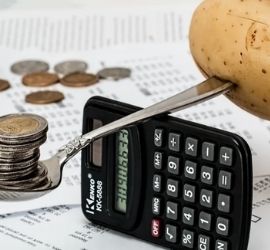What Is an Available Balance?
 The available balance is the balance in checking or on-demand accounts that is free for use by the customer or account holder. These funds are available for immediate use. Any deposits, withdrawals, transfers, or other activity has already cleared to or from the account. A credit card account’s available balance is normally referred to as available credit.
The available balance is the balance in checking or on-demand accounts that is free for use by the customer or account holder. These funds are available for immediate use. Any deposits, withdrawals, transfers, or other activity has already cleared to or from the account. A credit card account’s available balance is normally referred to as available credit.
An account holder’s available balance may be different from the current balance. The current balance generally still includes any pending transactions that haven’t been cleared. For this reason, the available balance is different from the current balance. Account-holders can use all of the available funds listed.
Key Points
- The available balance is the balance available for immediate use in a customer’s account. This balance includes any withdrawals, transfers, checks, or any other activity that has already been cleared by the financial institution.
- This balance can be different from the current balance which lists pending transactions until they clear.
- Customers can use any or all of their available funds as long as they don’t exceed them.
Understanding Available Balance
Available means exactly what it states. Available funds are clear and ready for immediate use in a customer’s account. This balance is updated continuously throughout the day. Any activity that takes place in the account affects this balance. This includes a transaction done through the bank’s teller, an automated teller machine (ATM), at a store, or online. However, it does not include pending transactions that have yet to clear. When you log into your online banking portal, you will normally see two balances listed – the available balance and the current balance. The current balance is what you have in your account until any pending transactions clear. This figure includes transactions such as checks or store purchases.
Depending on both the issuing bank and the receiving bank’s policies, check deposits may take anywhere from one to two days to clear. This process may take much longer if the check is drawn on a foreign institution. The time between when a check is deposited and when it is available is often called the float time.
A customer’s available balance becomes important when there is a delay in crediting funds to an account. If an issuing bank has not cleared a check deposit, for example, the funds will not be available to the account holder. This can be confusing because they may show up in the account’s current balance.
Your available balance
is the amount you can spend right now. To determine whether you have enough money in your account to cover a transaction, we use your account’s available funds which is based upon the deposits and withdrawals to your account and all pending electronic transactions, including pre-authorized transfers, point of sale transactions, and merchant payment authorizations (regardless of whether they have posted to your account). Sometimes you’ll see available funds that are lower than your current balance. In those cases, you can only spend your available balance (or less if you have outstanding checks), and the rest of the money is being held by your financial institution. Current balances include all of your money, including all available funds PLUS funds that are being held.
For example, assume your available and current balance are both $50, and you swipe your debit card at a restaurant for $20. A hold is placed on your account, so your available funds are only $30. Your current balance is still $50. Before the restaurant charge is sent to us for processing, a check that you wrote for $40 clears. Because you have only $30 available (you have committed to pay the restaurant $20), your account will be overdrawn by $10, even though your current balance is $50. In this case, we paid the $40 check. You will be charged an overdraft fee. Instead of paying the $40 check, we could have returned the check and would have charged you a non-sufficient funds fee. The fees (overdraft or non-sufficient funds) will be deducted from your account, further reducing the balance. (Source: campusfederal.org/)
The Current Balance
Your current balance is the amount of money that is actually in your account at any given time. Your current balance reflects transactions that have “posted” to your account but it does not include transactions that have been authorized and are pending. While it may seem that the current balance is the most up-to-date display of the funds that you can spend from your account, this is not always the case. Your account may have purchases, holds, fees, other charges, or deposits made on your account that have not yet posted and, therefore, will not appear in your current balance.
Example of Current Balance
If you have a $100.00 current balance and you wrote a check for $60.00, then your
current balance will show $100.00 because the current balance does not include the
pending check transaction which has not yet posted. While your current balance is
$100.00, you have already spent $60.00. (Source: thecooperativebank.com)
Using the Available Balance
Customers can use their available funds any way they choose, as long as they don’t exceed the limit. Just keep in mind any pending transactions that haven’t been added or deducted from the balance. A customer should be able to withdraw funds, write checks, do a transfer, or even make a purchase with their debit card up to the available balance.
For example, your bank account balance can be $1,500, but your available funds may only be $1,000. That extra $500 may be due to a pending transfer to another account for $350, an online purchase you made for $100, a check you deposited for $400 that hasn’t cleared yet because the bank put it on hold, and a pre-authorized payment for your car insurance for $450. You can use any amount up to $1,000 without incurring any extra fees or charges from your bank. If you go beyond that, you may go into overdraft, and there may be issues with the pending transactions. (Source: investopedia.com)
Examples of Transactions Not Reflected in Your Available Balance
- Outstanding Checks and Bill Payments – If you have written checks from your account or
have set up automatic bill payments, those transactions will not be reflected in your
available balance when authorized. These transactions will be reflected in your
current balance and available balance when the transactions post to your account.
- Debit Card Holds – A merchant must obtain your bank’s authorization for a debit transaction. If the merchant does not submit a one-time debit card transaction for payment within 24 hours of
authorization, The bank must release the authorization hold on the transaction. Since the hold has been released, your available balance would not reflect this transaction until the transaction has been received by and paid from your account.
Available Balance and Check Holds
Banks may decide to place holds on checks under the following circumstances. These holds can affect your available funds total:
- Checks over $5,000 – If the check is above $5,000, the bank can place a hold on whatever amount exceeds $5,000. However, the hold amount must be made available within a reasonable time, usually two to five business days.
- Previously overdrawn accounts – Banks may hold checks from accounts that are repeatedly overdrawn. This includes accounts with a negative balance on six or more banking days in the most recent six-month period. Also, account balances that were negative by $5,000 or more two times in the most recent six-month period.
- Reasonable cause – If a bank has reasonable cause to doubt the collectibility of a check, it can place a hold. This can occur in some instances of postdated checks, or stale checks – checks dated six (or more) months prior. It can also include any checks that the paying institution determines may not be honored. Banks must provide notice to customers of doubtful collectibility.
- Times of emergency and disaster – A bank may hold checks deposited during emergency conditions, such as natural disasters, communications malfunctions, or acts of terrorism. A bank may hold such checks until conditions permit it to provide the available funds.
- New customers – Banks may hold deposits into the accounts of new customers. These are defined as those who have held their accounts for less than 30 days. New customers may be subject to a different availability schedule than longer-term, established customers.
Regulations regarding the availability of funds and collection of checks
Banks may not hold cash or electronic payments, along with the first $5,000 of traditional checks that are not in question. On July 1, 2018, new amendments to Regulation CC—Availability of Funds and Collection of Checks—issued by the Federal Reserve took effect. This was to address the new environment of electronic check collection and processing systems. It including rules about remote deposit capture and warranties for electronic checks and electronic returned checks.
Special Considerations
There are cases that can affect your account balance—both negatively and positively—and how you can use it. Electronic banking makes things easier and more convenient. It allows you to schedule payments and to receive direct deposits at regular intervals. But, you must remember to keep track of all your pre-authorized payments. This is especially true if you have multiple payments coming out at different times every month.
Potential for Error
The potential for confusion when there are two different account balances available is obvious. Even if you disregard your current balance and always use the available funds as your reference point, there is still a chance for error. Your available funds may not reflect the true amount you have to spend if you make purchases overnight or if merchants fail to post a charge to your account immediately. In some cases, charges come through days later than expected, leaving the account holder confused as to how the account is overdrawn. There is no foolproof way to eliminate potential errors completely unless you keep your own business records and checking account ledger.
You can review both your current and available balances when you review your account online, through mobile banking, at an ATM, by phone or at a branch. However, it is important to understand that you may still overdraw your account even though the available balance appears to show there are sufficient funds to cover a particular transaction. This is because your available balance may not reflect all your outstanding checks and automatic bill payments that you have authorized (or other outstanding transactions) that have not yet posted to your account. Additionally, your available balance may not reflect all of your debit card transactions due to circumstances outside of your bank’s control. As demonstrated by the examples below, the best way to know how much money you have available (including all prior checks and authorizations) is to record and track all of your transactions closely.
Information Available via Online Banking
If you have questions or doubts about your small business’ balance versus your current or account balance view your online statement or transactions list to get a rundown of every dollar you’ve spent, where it went, when and why. Transfers, deposits, withdrawals and wired funds are also noted on your account transaction list, so there is no question about the state of your small business account. Compare your available funds to the monthly starting balance and the transactions listed on your statement to check that all is present and accounted for. (Source: smallbusiness.chron.com)
So you just sent a PayPal payment but now you realize it was a mistake. Maybe the amount was wrong. Or, the amount was correct but you sent it to the wrong person. Maybe you just changed your mind and you no longer want to send that person money anymore. Whatever the reason, you can cancel a PayPal payment pretty easily – as long as the receiver has not claimed it. On the other hand, some PayPal payments can’t be canceled and your only recourse is to ask for a refund or to dispute the charge with the company in question. However, if you have sent a payment that requires the receiver to actively claim it, you may be able to cancel that payment and keep your cash.
 The available balance is the balance in checking or on-demand accounts that is free for use by the customer or account holder. These funds are available for immediate use. Any deposits, withdrawals, transfers, or other activity has already cleared to or from the account. A credit card account’s available balance is normally referred to as available credit.
The available balance is the balance in checking or on-demand accounts that is free for use by the customer or account holder. These funds are available for immediate use. Any deposits, withdrawals, transfers, or other activity has already cleared to or from the account. A credit card account’s available balance is normally referred to as available credit.


